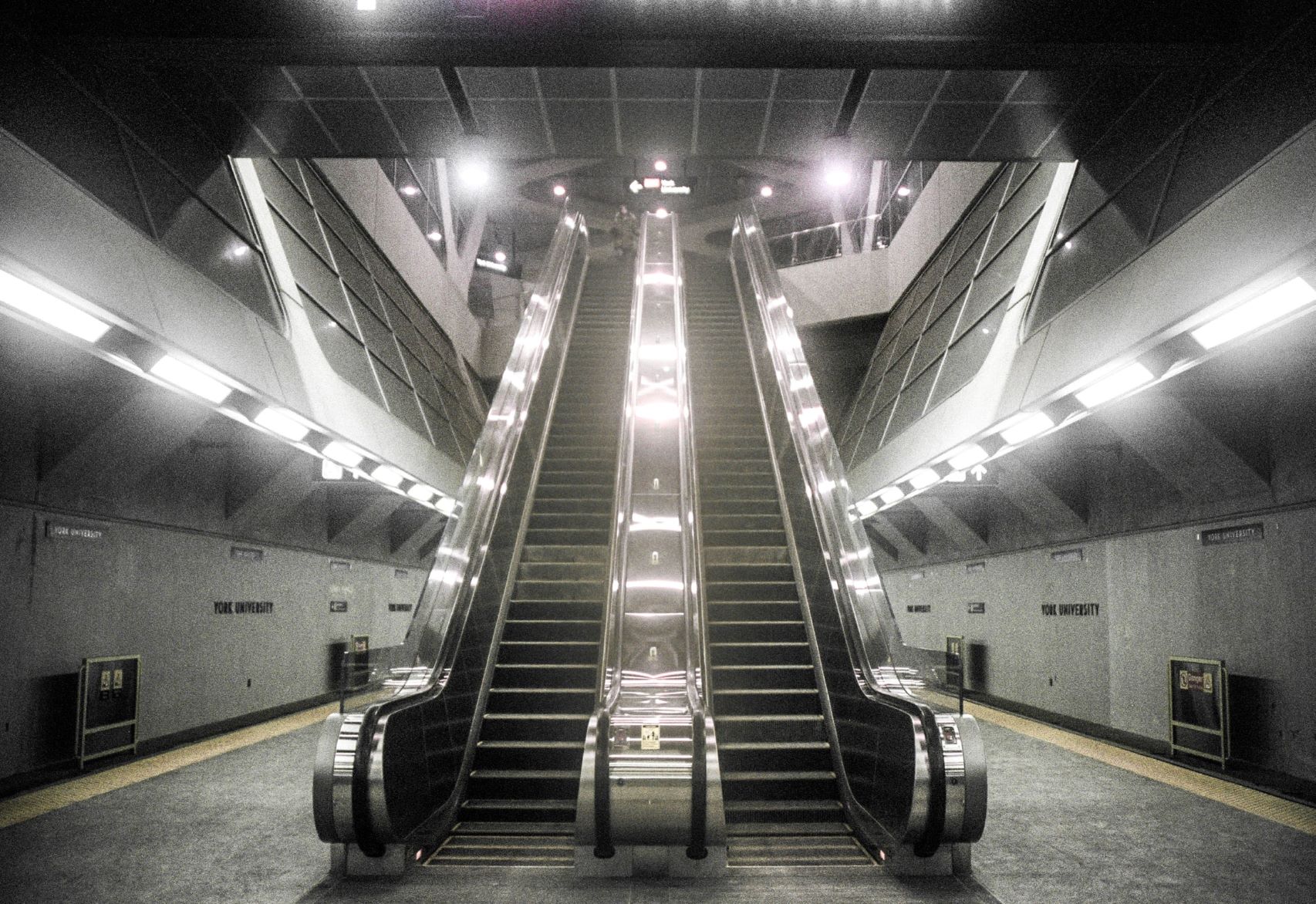Ameer Shash | Staff Writer
Featured image courtesy of Jordan Chu, Photo/Video Editor
Prior to the 2017-2018 school year, your commute will have partially consisted of a ride north of Line 1, which would then be followed by getting off at Sheppard West station (formerly called Downsview station) and hopping onto the 196 York University Rocket. The buses would seemingly take a while to arrive on a campus that was deprived of efficient public transit.The route which serviced the university, known as the York University busway, was a near two-kilometer bus-only route that connected Sheppard West station with the university grounds.
The winter months would make for a daunting trip home given the time it took to wait for the bus. The defunct 196 Rocket route was replaced with the finalization of the York University subway station.
York’s subway station stands between the Accolade buildings and the Kaneff tower at 120 Ian MacDonald Boulevard. It is one of six new subway stations — Vaughan Metropolitan Centre, Highway 407, Pioneer Village, York University, Finch West and Downsview Park respectively — built in 2017 as part of an extension project on Line 1, colloquially known as the ‘yellow line.’
The extension, also known as the TTC’s York Spadina Subway Extension, received praise upon its completion two years ago. Plans for the project were underway for nearly ten years since 2009 to cater to the growing demand of the campus, as well as residents in the surrounding area.
December 17th, 2019 marked two years of the subway station serving the York community and neighbouring residents alike.
The extension has been praised by many students because it allows for access to the campus for students who live in regions north of Toronto. Students from York Region, for example, can take York Region Transit buses to the Vaughan Metropolitan Centre and head southbound to York’s subway station.
The subway extension also allows for connections to the Tait Mackenzie Centre, York’s athletic centre designated for some on-campus exams. Students have been able to take a one-stop trip northbound to Pioneer Village station, which neighbours the exam site and thus eliminates the walk from Vari Hall. It makes the trip especially efficient during the winter months when walking far distances in the snow proves to be a challenge.
Not only does the new station connect to on-campus sites, but other regions across the Greater Toronto Area. Each of the six subway stations help thousands of Toronto commuters access spaces that would otherwise require a lengthy bus ride — cutting their commute times significantly. In 2018 at York University station alone, more than 34,000 passengers had travelled through the station.
Many students who have entered their first or second year at university this year haven’t seen the station during its construction phase. The station seems more like a mundane feature of the commute to these new students, but an infrastructural breakthrough to senior students and staff. Some students are even adamant that the subway station looks ‘artsy’ and abstract.
The subway station features many glass windows to allow light to enter, eliminating the need for costly light fixtures. At platform level, the interior of the station comprises mostly of the colour grey: the perfect colour to complement the mood of your average student at this school during soon-approaching midterms and exams.
One design, which remains widely unnoticed, is on the exterior of the station facing Vari Hall. In an artist’s rendering of the design before the station’s construction, it depicts two stairwells on the exterior concave level of the subway station. The illustration shows students walking down stairs and congregating in the space. This, however, is not the case after the station was built. There are glass partitions that border the stairwell to the congregation space, and while it was in the plans, the university may have installed these panels as a safety concern. Adjacent to the stairs are flowers that compensate for what would otherwise be a hill.
The station isn’t free from faults, though. A shared frustration for many riders is the often dysfunctional escalators that take you to street-level. For someone who has got little to no sleep, climbing stairs can prove to be a daunting task on its own.
The rising presence of fare inspectors have sparked frustration for students, as well. Standing intimidatingly and heavily dispersed around the other side of the Presto fare gates, it can be annoying when stopped to confirm you’re using the correct fare media.
The York community, however, has found ways to evade not only fares but the inspectors themselves. Students on York’s Reddit page call out the presence of fare inspectors at either York University station or Pioneer Village station. According to student advisories on the page, students would then alternate stations to avoid potentially getting caught by fare inspectors.
Neither York’s administration nor the TTC have been made aware of this, though students persist in this risky behaviour at the expense of being issued hefty fines and even criminal charges.
All in all, this station is an enhancement to the campus’ aesthetic, and we shall let time create new memories and history within the station.


